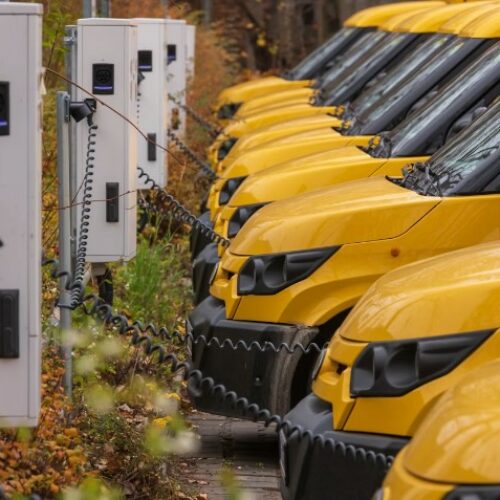These are good times for battery storage in the UK. Last October, the US International Trade Administration singled out the UK storage market as one to watch, with more than 16GW of capacity in operation, under construction or in the pipeline.
More recently, the Department for Business, Energy and Industrial Strategy has set aside £7 million in funding to help diversify the storage market with more long-duration assets. Investors are eyeing the Balancing Mechanism and Capacity Market alongside traditional short-duration opportunities.
Against this backdrop of rapid growth and diversification, it might appear that optimising batteries to work on the UK grid is a relatively simple matter. But nothing could be further from the truth.
Optimising storage plants within the electricity system remains fraught with challenges — and many of these could get worse as the energy transition progresses. At the simplest level, energy storage standardisation and interoperability are still very much work in progress.
This means that expanding or updating energy storage systems is not always straightforward.
The problem is not expected to get any easier as long-duration assets such as flow batteries increasingly enter the mix alongside lithium-ion chemistries, which accounted for nine of the top ten sites in the UK according to an analysis last year by Solar Media.
Another challenge that battery storage could face to a growing extent over time is the erosion of its capacity to enhance renewable energy dispatchability and reduce supply-demand imbalances. Carrying out these vital grid functions is easy at low renewable energy penetrations.
However, as variable renewable energy sources account for an increasing proportion of overall generation the amount of capacity required for balancing could become too great to cost effectively address through batteries.
Instead, alternatives such as low-carbon hydrogen could come into play, creating a new market landscape that battery players will have to adapt to.
Second guessing market dynamics is already an issue during the planning stage of new battery projects, because of cell degradation: the capacity you install in a plant today is not the same as the capacity you will have left five or ten years from now. Project owners have two ways to address this.
The first is to build a bigger battery plant than you need at the outset, so it can still fulfil its contractual obligations years into the future despite degradation.
Oversizing is easy to do from a technical point of view but could be hard to justify from a financial perspective, since you are basically paying for battery capacity that you will not use at the outset.
The other option is to accept that you will have to supplement the capacity of the plant at some point in the future.
This cuts the initial capital expenditure and could allow you to take advantage of technology developments down the line but could involve significant technical risk on account of the lack of standardisation mentioned above.
In addition to these fundamentally economic considerations, battery optimisation is subject to other factors.
One high-profile issue is safety: although UK projects have not been as disaster-prone as those of South Korea, for example, incidents such as the Carnegie Road battery energy storage system fire have served as a reminder that lithium-ion batteries are potentially dangerous.
Another topic that looks set to rise in prominence is sustainability. There are already worries over supplies of certain critical battery materials, such as cobalt, and these will likely grow with continuing supply chain restrictions and geopolitical concerns.
In response, battery plant developers can expect to increasingly have to integrate new, more sustainable chemistries, look at ways to improve recycling and seek ways to extend the lifespan of existing assets, for example by using second-life batteries.
Clearly, then, battery plant optimisation remains beset by challenges despite the meteoric growth of the sector. But perhaps the biggest challenge of all is the grid infrastructure required to host large-scale distributed generation and storage.
At the distribution level in particular, the grid lacks mechanisms for monitoring and control. This lack of grid modernisation affects the integration of distributed energy storage assets.
For example, adding a new battery plant to the grid may affect the interconnection requirements of existing plants, which could result in the need for special designs, costly reconfigurations and longer debugging periods. What can be done to overcome these optimisation challenges?
The answer is to give battery plants the brains to cope not just with today’s grid requirements but also with those of the future. Battery storage plants are already blessed in this respect because they typically have a denser data footprint than other grid assets.
A battery system requires fine-grained monitoring for everyday operations. Performance monitoring and evaluation also depends on more parameters and metrics than are usually collected in other grid-connected assets. And warranty management requires long-term storage of data.
This need for in-depth data analysis is one reason why energy storage systems have evolved complex software suites that over time have formed the foundation of virtual power plants, aggregation platforms and so on.
Flexible battery warranties, which are not tied to a specific energy service, could contribute to this algorithmic complexity. And that’s good news for the grid.
A battery’s biggest asset as far as the grid is concerned is its flexibility, and the intelligence required to operate flexibly also provides multiple opportunities for operational optimisation.
Going forward, a battery’s brains will become more vital than ever in helping the asset to adapt not only to second-by-second changes in its environment but also to shifts that could take place over years or decades. The technology allowing this to happen is available today.
The Inaccess Unity platform for energy storage systems, for example, can help PV plants become dispatchable, improve power quality without transmission infrastructure investments and fully compensate consumption in zero-export scenarios.
We are working on forecast-based control strategies, improved virtual power plant operations, better asset performance management, artificial intelligence-enabled energy trading tools and enhanced system maintenance flexibility, giving batteries even more brains to support tomorrow’s grids.




